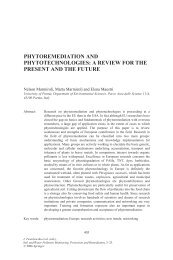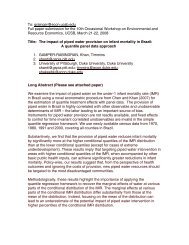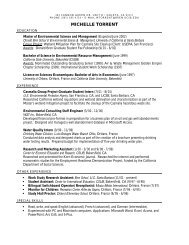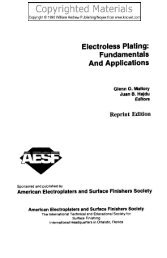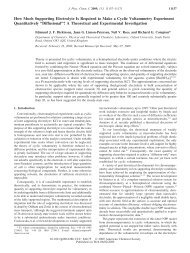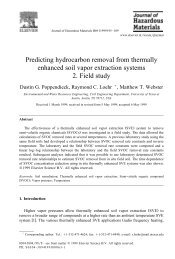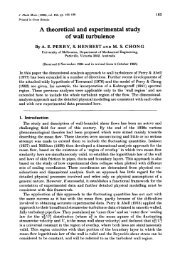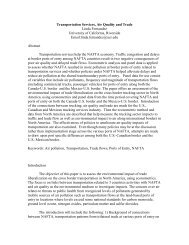anaerobic dehalogenation of halogenated organic compounds
anaerobic dehalogenation of halogenated organic compounds
anaerobic dehalogenation of halogenated organic compounds
You also want an ePaper? Increase the reach of your titles
YUMPU automatically turns print PDFs into web optimized ePapers that Google loves.
516 Max M. Häggblom et al.<br />
HO<br />
Br<br />
CH 3<br />
Br<br />
OH<br />
HO<br />
CH 3<br />
OH<br />
Br<br />
CH 3<br />
Br<br />
CH 3<br />
Methanogenic<br />
4 Br - Time (Days)<br />
Sulfidogenic<br />
300<br />
300<br />
250<br />
200<br />
200<br />
150<br />
TBBPA<br />
TBBPA<br />
TBBPA (Sterile)<br />
Conc. (µM)<br />
100<br />
50<br />
TBBPA (sterile)<br />
BPA<br />
Conc. (uM)<br />
100<br />
BPA (TBBPA)<br />
0<br />
0 20 40 60 80 100 120<br />
Time (Days)<br />
0<br />
0 20 40 60 80 100 120<br />
Figure 6. Dehalogenation <strong>of</strong> tetrabromobisphenol A in estuarine microcosms under<br />
methanogenic and sulfidogenic conditions (from Voordeckers et al., 2002).<br />
6. CONCLUSIONS<br />
Reductive <strong>dehalogenation</strong> is a promising mechanism for the removal <strong>of</strong><br />
toxic organohalides from estuarine and marine sediments. Anaerobic<br />
<strong>dehalogenation</strong> <strong>of</strong> <strong>halogenated</strong> aromatic contaminants, such as PCDD/Fs and<br />
tetrabromobipshenol A, was readily promoted in estuarine and marine<br />
sediments from several sites. Co-amendment with more soluble <strong>halogenated</strong><br />
<strong>compounds</strong> as “priming” agents greatly speeds PCDD/F dechlorination in<br />
<strong>anaerobic</strong> sediments. This stimulation was brought about in the presence <strong>of</strong><br />
added electron donors lactate and propionate ensuring reduced conditions<br />
and adequate reducing equivalents to stimulate dechlorination. In highly<br />
<strong>organic</strong> sediments with adequate reducing power, it is possible that these<br />
<strong>halogenated</strong> additives may be just as effective without additional electron<br />
donors. While the process has much potential, a key aspect <strong>of</strong> the technology<br />
– the nature and capability <strong>of</strong> the intrinsic microbial community – is <strong>of</strong>ten<br />
unknown. The use <strong>of</strong> molecular tools for monitoring microbial activity<br />
coupled with the understanding <strong>of</strong> how redox processes affect<br />
<strong>dehalogenation</strong> may be used as a rapid screening method for determining<br />
whether a site is a good candidate for bioremediation and to tailor a<br />
bioremediation strategy for that site.



